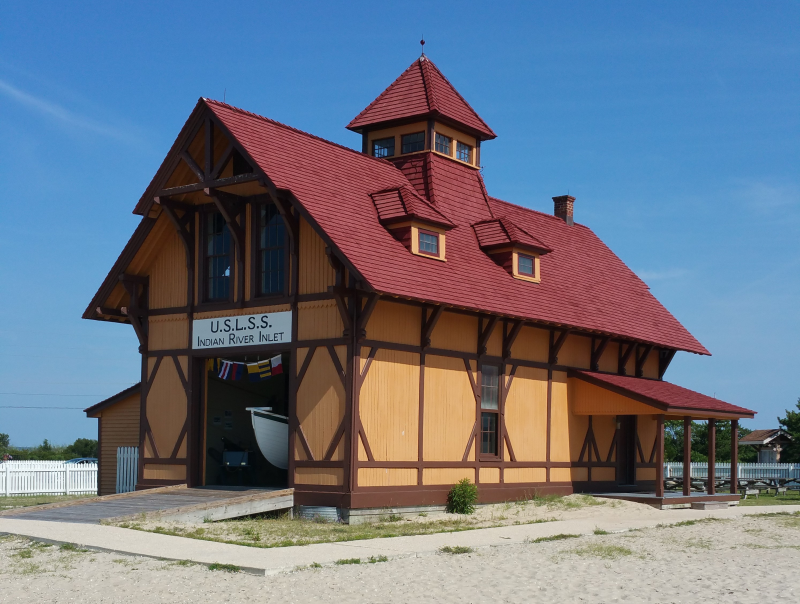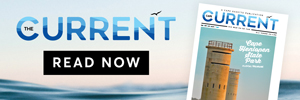As the sun was setting over Rehoboth Bay on a Saturday in late April, the smell of a wood-burning fire and steamed clams began to fill the air at the Indian River Life-Saving Station Museum. State park interpreters, dressed in turn-of-the-century surfman uniforms, led a group of 30 eager guests through the life-saving station, describing nighttime beach patrols and perilous high seas rescues that were performed along the coast over 100 years ago.
While guests learned about the forming of the U.S. Life-Saving Service and the brave men that served at Station Indian River, Chef Lion Gardner of Blue Moon Rehoboth put the finishing touches on his 19th century, locally inspired dinner courses.
"While it isn't completely clear as to what the surfmen in our area ate on a regular basis, we do know a few things, and the rest we left up to the chef's imagination," said Laura Scharle, Interpretive Programs manager of Delaware Seashore State Park. "These men ate a great deal of canned goods, occasionally bought perishables, and even lived off the land to some extent."
Scharle went on to explain that with the abundant marshlands close to the station, waterfowl and seafood probably made up a good portion of the surfmen's diet, as well as some native plants, such as the wild beach plum.
"This was an exercise in culinary anthropology," said Chef Lion Gardner. "Since we didn't have a lot of information about what the surfmen were eating, we focused on things they were likely to have eaten based on what was available to them in terms of ingredients and cooking methods."
As guests were touring the upstairs of the Life-Saving Station, the downstairs was transformed into a dining room, complete with lantern light for ambiance. Once guests were finished the tour of the historic building, they sat down for dinner, which began with steamed clams, oysters, and even periwinkle snails.
"When Chef Lion's catering manager sent me the menu draft, I was just about giddy with excitement when I saw it," said Scharle. "Periwinkles are tiny snails that live in salt marshes in our area and we typically see them climbing up blades of cordgrass; not served up for an appetizer!"
After the first course, guests enjoyed clam chowder (served in a tin can) and a foraged greens salad. Next up were the entrees served family-style: shad, barbecued pheasant and muskrat stew!
Gardner said, "We researched popular canned goods of the time. We focused on ingredients that could be easily foraged, trapped, hunted, or caught here 100 years ago and we cooked everything simply on an open fire."
He said, "Since the surfmen lived a demanding life, the likelihood that they spent hours a day planning and preparing meals was pretty slim." Thus he deviated slightly from historical records to create a memorable meal, and not simply try to re-create a typical dinner from a bygone era.
Gardner and his team wanted the guests to have a real culinary experience, which is exactly what they got. One of the attendees, Robert Martin, said, "The interpretation and replication of a 19th century surfman's dinner was above and beyond my expectations...this meal was, for me, the piece de la resistance of Delaware Seashore's Lighthouse Weekend."
After a dessert of fry bread and local jam and honey, the museum tour participants continued out to the beach. With oil-lit lanterns in their hands, guests walked out to the beach to experience what a surfman may have experienced on an evening beach patrol. Park interpreters finished the evening by telling stories of tragedy and mystery that occurred along the coast.
This one-of-a-kind dinner experience at the Indian River Life-Saving Station was just a portion of a weekend-long Lighthouse and Life-Saving-themed getaway package hosted by Delaware Seashore State Park. Participants stayed in the waterfront Indian River Inlet cottages, while touring lighthouses and life-saving stations, and learning about Delaware's maritime heritage.
For more information, go to www.destateparks.com/deseashore or www.destateparks.com/irlss.














































